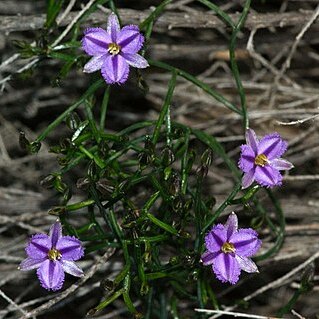A small lily which keeps growing from year to year. A creeping or twining plant. It drapes over other plants. It grows to 10-20 cm high. It has one or two slender stems. It has tubers which occur in a cluster at the base of the plant. It has leafless branches. Each branch produces a single flower. It has an attractive violet flowers. There are 3 petals broad petals alternating with 3 narrow petals. The broad petals have a delicate fringe. Each flower only lasts one day. After flowering the plants die back to the roots.

